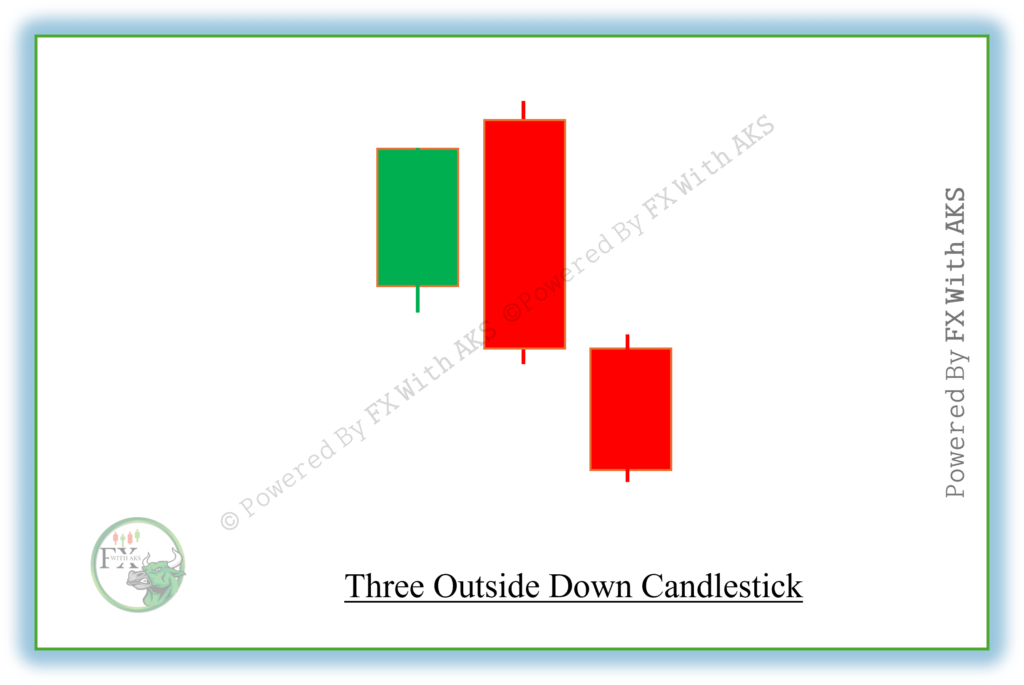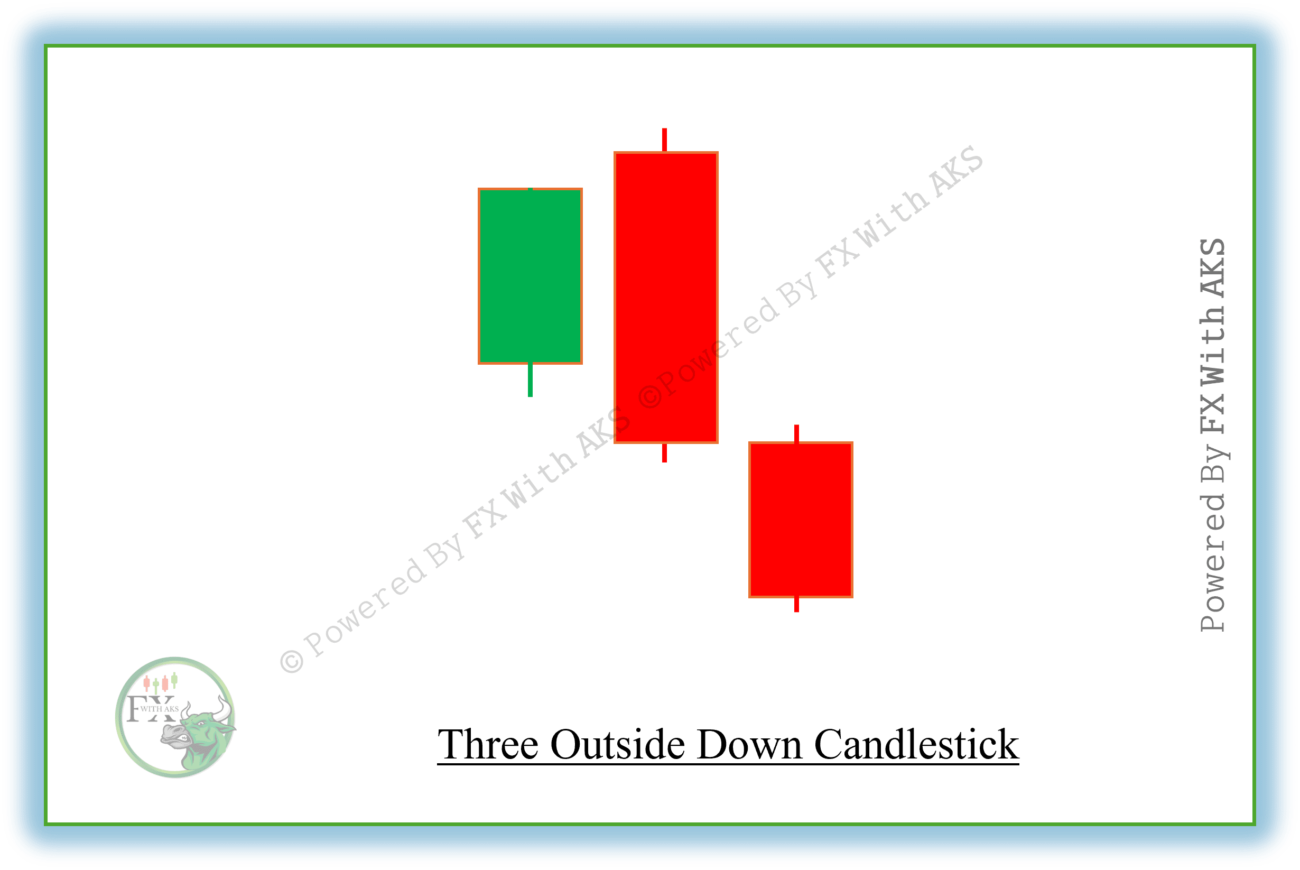The Three Outside Down is a bearish reversal candlestick pattern that typically appears at the top of an uptrend. It signals increasing selling pressure and often marks the start of a downward reversal.
🕯️ Structure of the Three Outside Down Pattern
It consists of three candles:
- First Candle:
- A small bullish (green/white) candle.
- Indicates the uptrend is still in place but possibly weakening.
- Second Candle:
- A large bearish (red/black) candle.
- Engulfs the entire body of the first candle (like a Bearish Engulfing pattern).
- Shows a strong reversal move.
- Third Candle:
- Another bearish candle.
- Closes lower than the second candle, confirming follow-through by the bears.

▲ ← Small Bullish Candle
▼ ← Large Bearish Candle (engulfs the first)
▼ ← Another Bearish Candle (closes even lower)
📉 Interpretation
- First candle shows weak bullish effort.
- Second candle shows strong bearish reversal (engulfing).
- Third candle confirms the continuation of the reversal — sellers are firmly in control.
✅ Strongest When:
- Appears after a clear uptrend.
- Third candle closes with high volume.
- Reinforced by resistance or bearish divergence (e.g., RSI, MACD).
🔁 Related Pattern
| Pattern | Signal | Opposite Pattern |
|---|---|---|
| Three Outside Down | Bearish | Three Outside Up (Bullish) |
| Bearish Engulfing | Potential reversal | Three Outside Down confirms it |
⚠️ Notes for Traders
- Confirmation is key – don’t act until the third candle closes.
- Combine with trendline breaks, volume analysis, or indicators like moving averages for better results.
- Often used in swing trading to spot early shorting opportunities.
Would you like a script to detect this pattern or help spotting examples on a specific stock or time frame?

